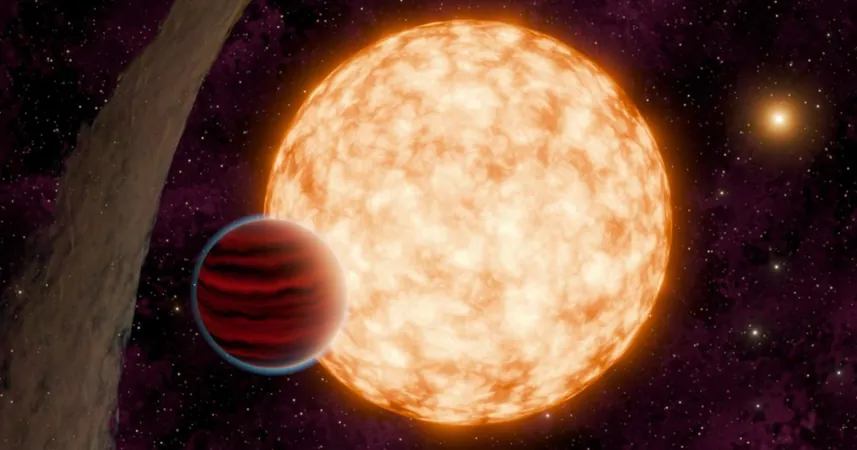
Astronomers Unearth the Youngest Known Exoplanet: A Cosmic Baby Just 3 Million Years Old!
2024-11-20
Author: Mei
Introduction
In a stunning revelation, astronomers have identified an exoplanet that is a mere 3 million years old—an astonishingly tender age in astronomical terms. While 3 million years might seem old in human history, in the grand timeline of planetary formation and evolution, it’s positively youthful. The field of exoplanet research has dramatically surged over the last decade, with over 5,000 planets outside our solar system confirmed to date. However, most of these are older, mature worlds comparable to our 4.5 billion-year-old Earth.
Discovery of the Youngest Exoplanet
Using NASA's cutting-edge Transiting Exoplanet Survey Satellite (TESS), scientists recently made headlines by discovering the youngest transiting planet ever identified: IRAS 04125+2902 b. This classification as a "transiting" planet comes from the way it was spotted—observing the telltale dip in brightness from its host star as the planet made its transit across its face.
Significance of the Discovery
In compiling their findings in the prestigious journal *Nature*, the researchers noted, “To our knowledge, this makes IRAS 04125+2902 b the youngest transiting planet discovered so far by a factor of about three.” Prior discoveries of young exoplanets have typically ranged from 10 million to 40 million years, meaning this new find represents a significant stride in our understanding of the formation of planets.
Challenges in Finding Young Exoplanets
So why is it so challenging to find planets as young as IRAS 04125+2902 b? Young exoplanets often still form from the dense protoplanetary disk—an accumulation of dust and gas surrounding newly born stars. These baby planets can often be concealed within the thick material of their protoplanetary disks. In this case, the scientists managed to spot this young planet because the disk of matter around the star is skewed, differing significantly in orientation compared to the star's orbital plane.
Characteristics of IRAS 04125+2902 b
The newly discovered planet orbits extremely close to its star, completing a year in just under nine Earth days. Remarkably, it boasts a radius over 10 times that of Earth. This substantial size suggests the potential evolution into types of planets known as super-Earths or sub-Neptunes, forming a class of rocky, gaseous worlds that are notably absent from our own solar system yet frequently discovered elsewhere in the cosmos.
Implications for Future Research
Excitingly, IRAS 04125+2902 b lies only about 520 light-years away, making it an appealing target for further exploration. Researchers believe that studying this nearby planetary system could shed light on the fundamental processes of planet formation. The team encourages future observations with advanced equipment like the James Webb Space Telescope, asserting that “Given its proximity to Earth and rare configuration, this system is a powerful environment for understanding early formation and migration.”
Conclusion
As we stand on the brink of further discovery, this finding not only captivates scientists but also highlights the possibility that the universe is far more prolific in creating new worlds than we previously imagined—reminding us that even the cosmos can be a playground for the young! Keep your eyes peeled, as more exhilarating discoveries are yet to come!

 Brasil (PT)
Brasil (PT)
 Canada (EN)
Canada (EN)
 Chile (ES)
Chile (ES)
 España (ES)
España (ES)
 France (FR)
France (FR)
 Hong Kong (EN)
Hong Kong (EN)
 Italia (IT)
Italia (IT)
 日本 (JA)
日本 (JA)
 Magyarország (HU)
Magyarország (HU)
 Norge (NO)
Norge (NO)
 Polska (PL)
Polska (PL)
 Schweiz (DE)
Schweiz (DE)
 Singapore (EN)
Singapore (EN)
 Sverige (SV)
Sverige (SV)
 Suomi (FI)
Suomi (FI)
 Türkiye (TR)
Türkiye (TR)